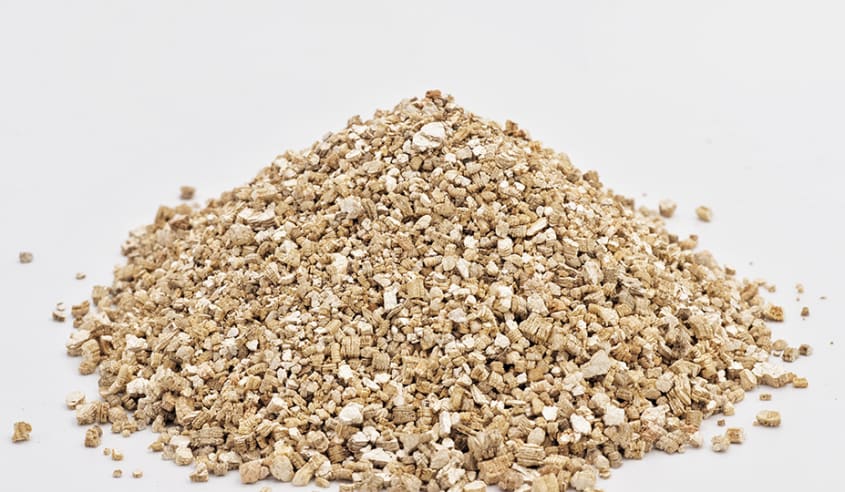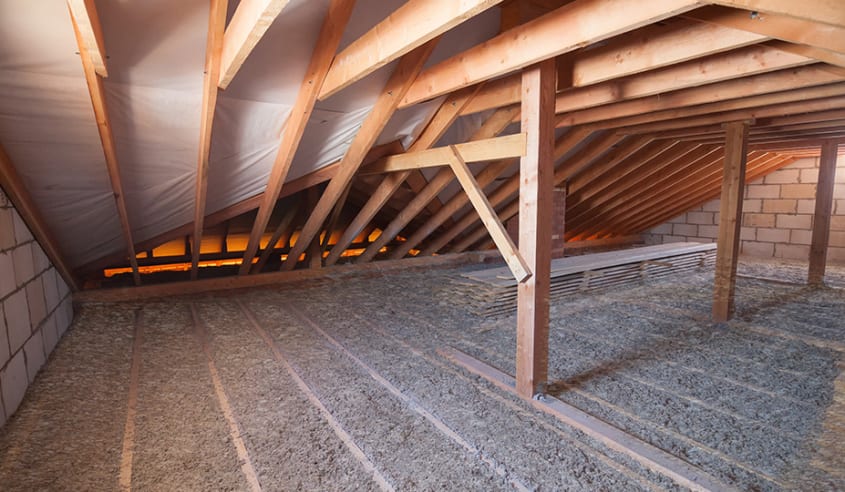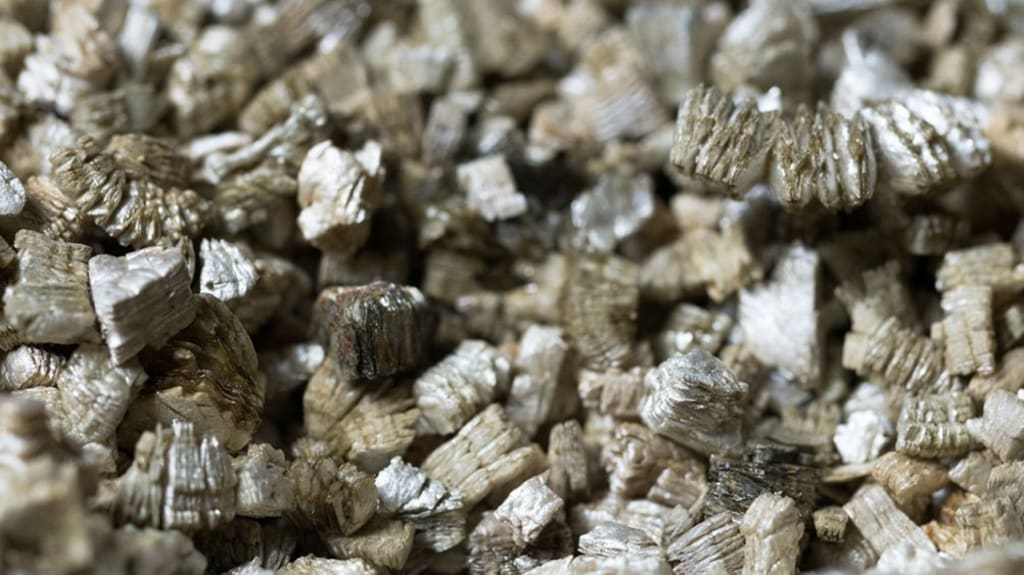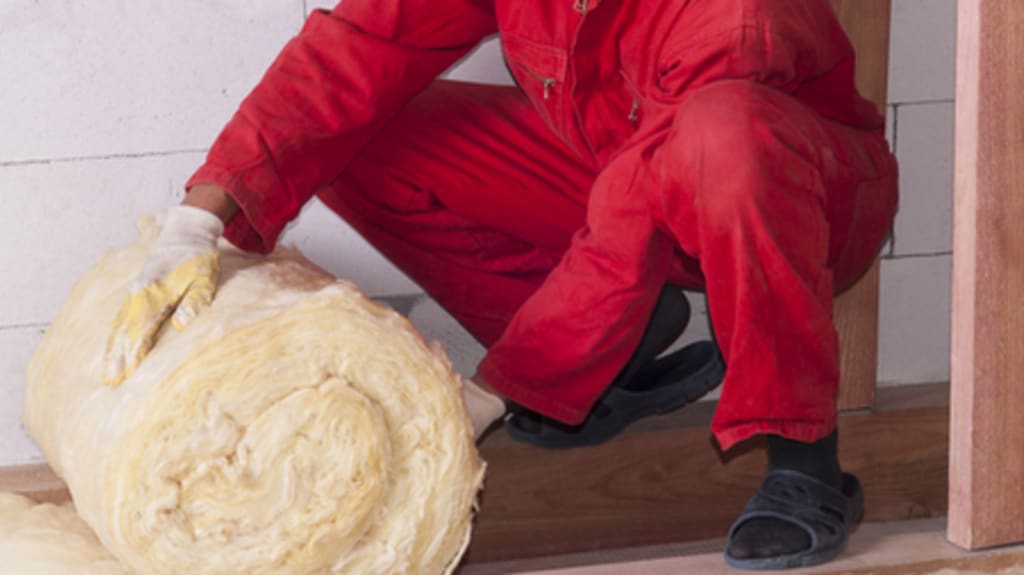There are some things no one wants in their home. In recent decades, there has been increasing awareness of the dangers posed by materials such as asbestos, which can contribute to lung disease, and carcinogenic urea formaldehyde foam insulation. The lesser-known vermiculite is one such material that homeowners should avoid.
Since vermiculite is sometimes contaminated with asbestos, it’s important to not attempt to handle it yourself.
What is vermiculite?
Vermiculite is an insulating and fire-resistant mineral found in many homes built between 1930 and 1990. Vermiculite is still sold today, mainly for agricultural and horticultural use.
It comes in small pellets, such as those used for wood stoves. Sold in multi-litre bags, this insulation can be installed by both builders and homeowners and is easy to spread in attics.
Why might vermiculite be contaminated?
Today, the fact that vermiculite may pose a health hazard elicits little more than a shrug. But take note: only those containing asbestos are cause for concern, particularly those sold under the brand Zonolite® Attic Insulation. This company sourced vermiculite exclusively from the Libby mine in Montana, USA. The mine contained a large deposit of asbestos, and the vermiculite was contaminated.
While products from the mine haven’t been sold since 1990, it’s estimated that approximately 300,000 Canadian households contain vermiculite contaminated with asbestos.

How to manage the presence of vermiculite
Can a product containing asbestos, even when inaccessible (like in the attic), be dangerous? Health Canada‘s guidelines are very clear: you must avoid handling or coming into contact with asbestos.
It’s recommended that you fill any cracks, such as those around ceiling light fixtures, to keep asbestos dust from contaminating the floor below. Similarly, if vermiculite containing asbestos has shifted over the years, it may have sunk along the interior walls. In these cases, it’s also essential to ensure that openings are properly sealed.
Finally, if your ventilation system is equipped with ducts that pass through the attic, it’s important to check that they are properly sealed so as not to circulate asbestos dust throughout the house. A well-ventilated attic can prevent the dust from infiltrating the house.
How to determine if there is vermiculite contaminated with asbestos in your home
At one time, vermiculite was considered an effective form of insulation in attics. That said, not every brand is contaminated with asbestos. Asbestos (not linked to vermiculite) can also be found in the cement, plaster, wall cladding, and ceilings of some homes.
If your home was built before the 1990s and you’re planning to renovate, it would be wise to test for asbestos. Renovations could actually release fibres into the air. Exposure to asbestos can lead to chronic lung diseases such as mesothelioma, lung cancer, and asbestosis.
The only way to determine if there is asbestos in your home is through testing. This needs to be done by a professional who will be able to properly protect themselves and your home during the collection process. Depending on the area to be tested, the materials, and the number of tests required, a proper analysis can cost anywhere from a few hundred to several thousand dollars.

Is there contaminated vermiculite in the house I want to buy?
How can you determine if there is vermiculite in the attic or walls of the house you want to buy?
Elena Maria Bejan, team leader and notary at DuProprio, says, “If the seller knows that their home’s insulation contains vermiculite, they’re obligated to report it to the buyer. They can present the buyer with any test or inspection report regarding the condition of the insulation, but the seller is not obligated to decontaminate, even if there is asbestos in the vermiculite. The seller must, however, disclose the information to the buyer, who can then make an informed decision about the purchase.”
A cautious and diligent buyer will always request an inspection as a condition of their offer to purchase. If the building inspector discovers the presence of vermiculite, the buyer will have the opportunity to perform an analysis at their own expense to find out if the insulation contains asbestos.
The buyer can then decide to purchase the house or condo in its current condition or to cancel or modify their offer to purchase. Ms. Bejan states, «It’s possible that the inspector won’t detect the presence of vermiculite, but that isn’t a flaw – it has no impact on the normal use of the property.”
Who pays for decontamination?
Naturally, the presence of asbestos will affect property value. Some buyers will simply pass on the property while others may make a lowball offer to cover the cost of decontamination. The impact will vary depending on the type of market (seller’s or buyer’s) at the time of sale.
Martin Desfossés, real estate coach at DuProprio, provided the following advice: “To facilitate negotiations, the seller can get a couple of bids to estimate the cost of the work so that they have a concrete number to reference during discussions. The seller and buyer could then come to an agreement on the decontamination of the premises, such as which party will pay for it and when it will be carried out (before or after the sale).”
How much does it cost to decontaminate vermiculite?
The cost will depend on the area to be decontaminated, how accessible it is, and the materials that will be selected for re-insulation. For example, the decontamination of a 1,000 sq. ft. attic could cost between $10,000 and $17,000. Pricing varies, so you’ll need to get a quote to know the costs for your decontamination project.
How do you dispose of vermiculite contaminated with asbestos?
Only professionals should remove contaminated vermiculite as it requires specialized equipment and protective measures. Decontamination is a painstaking process that includes setting up a temporary corridor to protect other rooms from the risk of contamination. The vermiculite is then safely removed via suction. These professionals also know how to dispose of it in an environmentally safe manner.
It’s important to then conduct an air quality test. If asbestos is still detected, further decontamination will be needed before re-insulating. When the air quality is satisfactory, a team of professionals will be able to insulate your attic with materials that don’t pose a health risk.

Seller’s declaration
Putting your home up for sale places several legal responsibilities on the buyer. In the declaration of the seller, it’s essential to include everything that is known about the house since it was acquired, namely any repairs that have been made, disasters that have occurred and, yes, the presence of vermiculite.
Mortgage and insurance
A savvy seller will have a test conducted at their own expense, the results of which will be available to the buyer. It’s then the buyer’s responsibility to make an informed decision. Be aware that your bank may choose not to approve your mortgage if there is asbestos present, just as an insurer may refuse to take on the risk of the contaminant being present in the home.
Purchase offer
The offer (followed by a post-inspection modification to the offer to purchase) should be conditional on either the removal of the vermiculite or a price reduction equal to the cost of decontamination. A buyer may also choose to withdraw their offer if they feel uncomfortable with the issue. Does asbestos-free vermiculite also need to be removed? This is ultimately the buyer’s decision.
Changing the insultation
More efficient insulation products are certainly available, including cellulose fibre and the familiar pink kind (fiberglass insulation). That said, keep in mind that Health Canada specifically recommends avoiding all contact with vermiculite.
For buildings undergoing extensive work or demolition, special care must be taken to prevent particles from escaping into the surrounding atmosphere. Lastly, if you do opt for removal and decontamination, there will be an additional cost to re-insulate your attic.

By Sylvain Lauzon
Sylvain Lauzon has been a journalist for several decades. He has covered topics ranging from economics, social affairs, and tourism to arts and entertainment. He has also worked as a program creator and producer for many television series on major Quebec networks. Sylvain has spent the last few years working as a freelance journalist. He is particularly interested in real estate, which has led him to write for RenoAssistance, where he covers topics related to current events, renovation, construction, and more.





